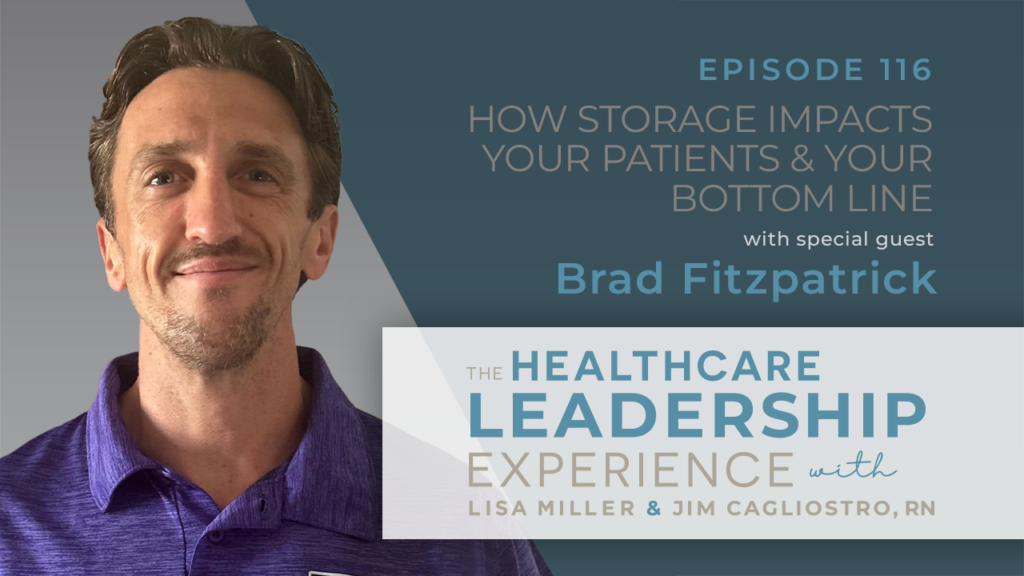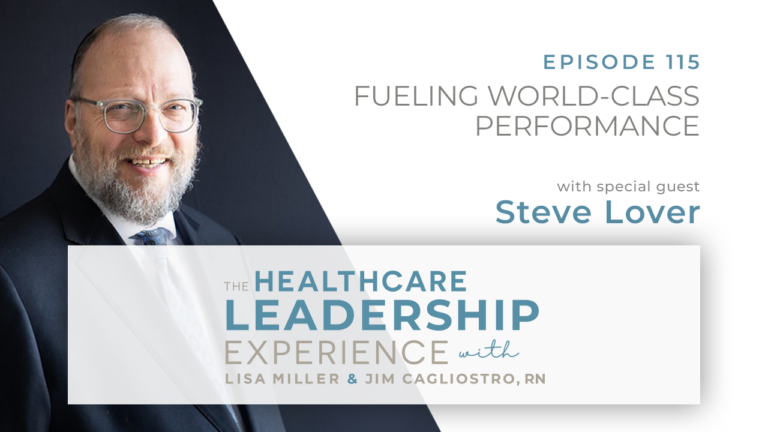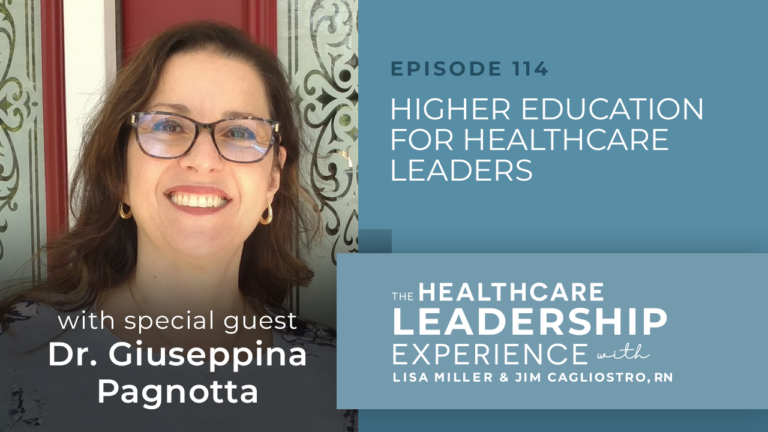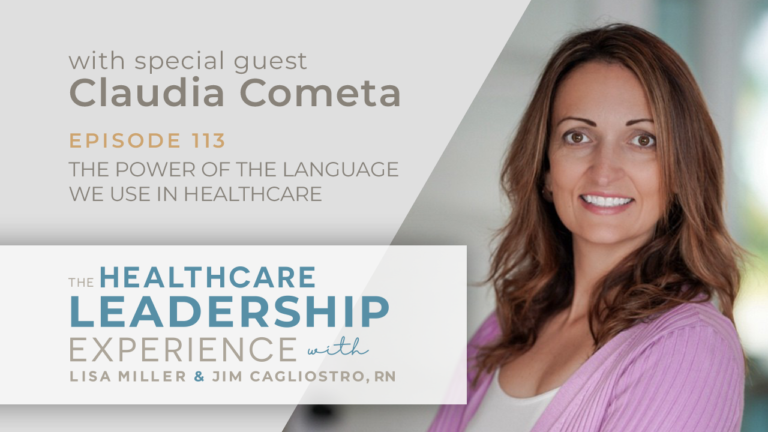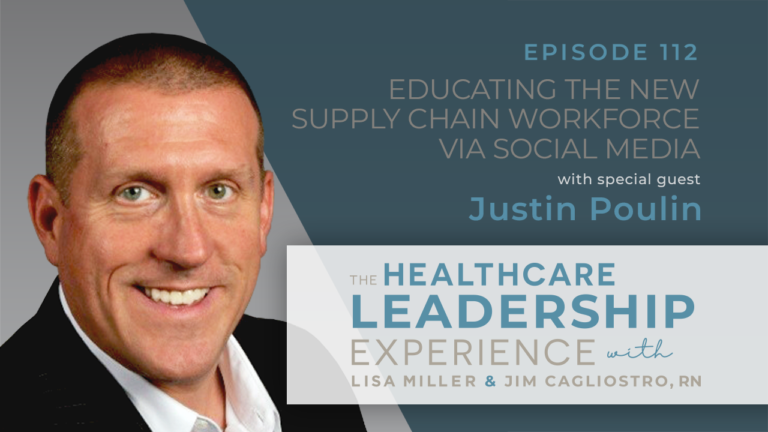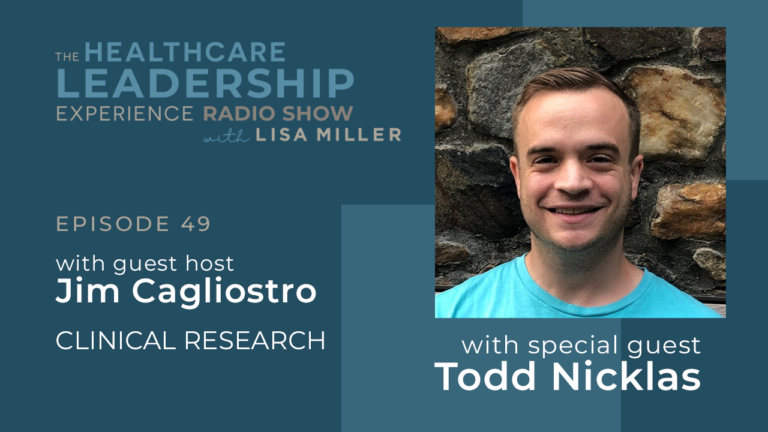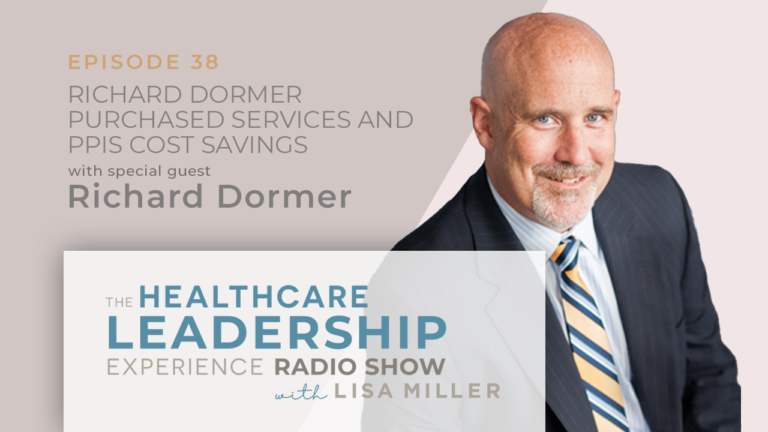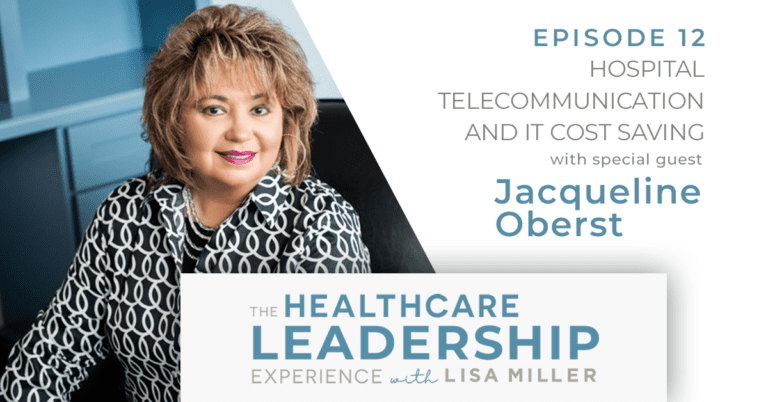Episode Introduction
Brad explains why he is potentially in the business of ‘’life and death,’’ how Covid changed the storage landscape and the opposing views of storage as luxury versus necessity. He also highlights the positive impact of storage on hospital margins, and shares why success in business comes from a focus on customers and ‘’attracting’’, not chasing.
Show Topics
- Two common storage pitfalls
- The impact of Covid-19
- Storage is ‘’potentially life and death’’
- Convincing the C-Suite
- Transforming relationships: A storage success story
- Leadership tip: Focus on your passion
04:15 Two common storage pitfalls
Brad explained why hospitals push storage down the list of priorities.
‘’I would say probably the number one would just be the misconception that optimizing your storage is more of a luxury than a necessity. And everybody has different reasons for not moving forward, or for lack of a better word, neglecting. Whether it be, “Well, we intend on doing that one day.” Or, “It’s out of the budget.” Those two are usually the biggest ones. But the one day is a slippery slope because you don’t want to wait until you have a fire till you get the sprinklers installed. ‘One day we’ll do it.’ ‘’
05:50 The impact of Covid-19
Brad said the storage landscape changed a lot after the pandemic.
‘’I’m sure this applies to everything, and it won’t surprise you when I say it, but Covid. Once Covid happened, and the pressure came on unexpectedly, I think everybody was able to assess how prepared or unprepared they were when the chips were down. And then, once that dust settled, there were some hospitals that said, “Okay, we never want to be caught off guard like that again. What areas can we fix? How can we fix it?” But then, there were other facilities that said, “We’ll wait until the wheels fall off.” And, actually, there is one hospital I spoke to recently, and they were told that, “Well, wait until the wheels literally fall off and then we’ll redo the room.”
11:25 Storage is ‘’potentially life and death’’
Brad said access to supplies and equipment can improve patient outcomes.
‘’Yeah, I don’t think it would surprise you that, first and foremost, I think it impacts patients with reduced delays. We’re in the business of potentially being life and death. So quick access to supplies and equipment, it minimizes any treatment delays, and that also improves patient outcomes. That said, also, I think the professional environment, a well-oiled machine doesn’t work as well if the gears aren’t where they should be. A well-organized hospital creates more of a professional and a reassuring environment which, for their patients and their families, can really go a long way. But hospitals aren’t exclusive. A library runs a lot better when it’s organized. A restaurant, a law firm, everything works better when things are where they should be and there’s no surprises.’’
15:09 Convincing the C-Suite
Brad explained the advantages for leadership in recognizing the value of storage.
‘’I don’t really see myself as the type of salesman who’s really trying to convince anymore. I’m more of attract, don’t chase. But that said, when I come in, I can read the room. I know when I’m here to give a bandaid, and then I know when I’m here to give open heart surgery. But that said, there’s an increasing number of individuals who see the value in storage after years of working with me. And some of the best projects I have are when these individuals, they get relocated to a new facility with a higher role. And then they have a whole clear canvas that they’re able to paint and make their own baby and really create. And I don’t think it’s a coincidence that the individuals who prioritize organization and storage are the ones who are finding themselves getting these new roles and being scouted for them. It speaks for itself, I think.’’
18:14 Transforming relationships: A storage success story
Brad shared an example of how storage transformed a customer relationship.
‘’One comes to mind, is a big hospital system of maybe about 13 hospitals there. Clean supply rooms were all converted over to a system, I won’t mention them because I don’t want to throw dirt on anybody. But they were sold on the concept on paper. It seemed great. So they went live with it. And out of the gate, they just had a lot of trouble, and they were ghosted by the customer service. And as we said, not to be overdramatic or put my theatrics, but, sometimes, it is potentially life and death. And they just didn’t have the margin for error with this system, so they had to take the financial loss. And then they brought me in to convert over to my storage systems. And we had to come in and work weekends when cases weren’t going on, and we had to act fast because it’s not like one supply room per hospital. It’s every floor has a supply room. So I didn’t have much of a social life during this conversion, but I learned a lot about my products. I learned a lot about my customer. I like to think that my customer service was put on display, and my relationship with that hospital system became stronger than oak.’’
20:24 Leadership tip: Focus on your passion
Brad said success in business isn’t all about the numbers.
‘’Obviously, I know that I’m not like everybody else. And I zig when everybody else zags sometimes. But I discovered, around 2018, that storage was my passion. And not to sound too corny, but I think it’s my purpose in life is working in hospitals, and getting them organized, and helping them run more efficiently. And as I said to you, my numbers are no longer my motivator. I’m not looking at the numbers and saying, “Oh, is this a good month or a bad month, financially?” I don’t watch the pot boil. I just focus on taking care of myself. I take care of my customers, and I think the rest just takes care of itself. I’m more mindful and attentive of what my customers are saying, and I’m not trying to push the most profitable product. I’m trying to, if they have a square hole, I have a square peg. If they have a round hole, I have a round peg. I think that that goes a long way. And my relationships, I think, have just really been cemented, especially the last year, ever since I was able to start FitzRight, and really engrave that culture into the company. I feel that my solid relationships have gotten even more concrete with my customers. And where thoughts go, energy flows, and I know that that’s a pretty cliche line, but I like to think that my customers can see that. There’s a sense of trust. And, again, it’s more of attracting, not chasing.’’
Show Links
Connect with Lisa Miller on LinkedIn
Connect with Jim Cagliostro on LinkedIn
Connect with Brad Fitzpatrick on LinkedIn
Check out VIE Healthcare and SpendMend
You’ll Also Hear:
Seeing things in a different light; Brad’s career journey to Fitzright Storage Solutions: ‘’I always marched to the beat of my own drum. I know I don’t really have the same energy as a lot of people out there, but I always found that I saw things in a different light. … then, in my old age, I became focused in on the relationships with my customers, and pushing more of a solution than one particular product.’’
Luxury versus necessity; two opposing views of storage: ‘’I have customers who I’ve had a long relationship, who know the value of getting everything in order and the benefits of it. But then, also, when I’m called in, I also know that if I’m called in because Joint Commission was just in, I’m not there to totally redo the thing. I’m there to put a bandaid on it so they could get Joint Commission or inspection off their back.’’
The positive impact of storage on a hospital’s bottom line: ‘’Efficient use of the storage space can reduce need for additional storage spaces. And in tow, that means a better inventory management, avoiding unnecessary purchases, or stocking up on materials that can expire, and overstocking on those types.’’
What To Do Next:
- Subscribe to The Economics of Healthcare and receive a special report on 15 Effective Cost Savings Strategies.
- There are three ways to work with VIE Healthcare:
- Benchmark a vendor contract – either an existing contract or a new agreement.
- We can support your team with their cost savings initiatives to add resources and expertise. We set a bold cost savings goal and work together to achieve it.
- VIE can perform a cost savings opportunity assessment. We dig deep into all of your spend and uncover unique areas of cost savings.
- If you are interested in learning more, the quickest way to get your questions answered is to speak with Lisa Miller at lmiller@spendmend.com or directly at 732-319-5700
Episode Transcript
DOWNLOAD THE FULL PDF TRANSCRIPT HERE
CLICK HERE TO OPEN THE FULL TRANSCRIPT
Brad (00:00): We’re in the business of potentially being life and death. So quick access to supplies and equipment, it minimizes any treatment delays, and that also improves patient outcomes. That said, also, I think the professional environment, a well-oiled machine doesn’t work as well if the gears aren’t where they should be. A well-organized hospital creates more of a professional and reassuring environment which, for their patients and their families, can really go a long way.Introduction (00:31): Welcome to the Healthcare Leadership Experience Podcast, hosted by Lisa Miller and Jim Cagliostro. Lisa is the founder of VIE Healthcare Consulting and now managing director at SpendMend. Lisa and her team has generated over $1 billion in financial improvements for VIE’s clients since 1999. Since 2007, Jim has been a registered nurse working in critical care, perioperative services, and outpatient settings at nationally recognized medical facilities across three states. You’ll hear conversations on relevant and trending topics in healthcare and much more. Now, here’s your hosts, Lisa and Jim. Jim (01:10): Hi, this is Jim Cagliostro, and you’re listening to the Healthcare Leadership Experience. Today’s guest is Brad Fitzpatrick, owner of FitzRight Storage Solutions. And, today, we’ll be discussing why storage matters in healthcare, at your healthcare organization, how it impacts patients, how it impacts your bottom line. So, Brad, welcome, and thank you for joining us.
Brad (01:30): Thank you so much for having me, Jim. Jim (01:32): So I’d like to jump in and let you talk a little more about yourself because I know I’ll miss something. Can you take a few minutes to share a little about your career journey before you started FitzRight Storage solutions, how you got into this field, and why you started your own business? Why you said, “Hey, this is the time.”
Brad (01:50): Hey, absolutely. So I started in healthcare around 2007, right out of college. And it was primarily focusing on sterilization products, trays, borescopes, ultrasonic cleaners, steam integrators, that kind of stuff, with a little bit of storage. So I would say maybe about 80/20. And then, as my career went on, the scale started to tip more towards storage. Product lines change hands, technology changes, some products become obsolete, but I found that storage is what really kept my interest. It was always my passion. And I think that the customers, they sensed that. And then, in 2023, I decided to start FitzRight Storage Solutions, and really ditch the sterilization side of everything, and just go all in where my passion was. Jim (02:50): Great. I guess I’ll ask more on a personal level, even at a young age, have you always considered yourself an entrepreneur and going out and doing your own? Or is that something you fell into?
Brad (03:00): Yeah, you know what? I always marched to the beat of my own drum. I know I don’t really have the same energy as a lot of people out there, but I always found that I saw things in a different light. And while I did like getting the sales experience with the sterilization things, I found that, I guess I was a little green and more motivated by sales numbers and wanting to be the best and crush the competition. But then, in my old age, I became a little bit less aggressive in that sense, and more really just focused in on the relationships with my customers and pushing more of a solution than one particular product. Jim (03:50): Sure. So I appreciate that. I’ll tell you, I know I’ve mentioned to you before, your videos on LinkedIn, the play on words, all this stuff, I appreciate the energy that you bring to LinkedIn, so thank you. So, Brad, when it comes to storage, what would you say are some of the more common pitfalls that hospitals see, that hospital leaders see, even surgery centers, or whatever organizations you work with in healthcare? What are some of the more common pitfalls?
Brad (04:15): I would say probably the number one would just be the misconception that optimizing your storage is more of a luxury than a necessity. And everybody has different reasons for not moving forward, or for lack of a better word, neglecting. Whether it be, “Well, we intend on doing that one day.” Or, “It’s out of the budget.” Those two are usually the biggest ones. But the one day is a slippery slope because you don’t want to wait until you have a fire till you get the sprinklers installed. Jim (04:50): Yes, that’s a huge point. And I think, later, I’m going to ask you in terms of tipping point, like convincing, hey, how do you get someone to change that mindset from, “Hey, one day we’ll do it”? Because you and I both know, in life, one day means, often, it’s never going to happen because it just gets pushed down the list of priorities. And I love what you said about a necessity versus a luxury. And a lot of times, it’s how we view something. And how do we make it a priority? And I’m sure a lot of your conversations are convincing individuals, those in leadership, stakeholders, those who have responsibility in these organizations to say, “Hey, it’s not just a luxury. There are benefits to it. And not just benefits, but it’s a necessity.” So we’ll get into that later.
Jim (05:32): I do want to ask you, in terms of hospital storage, looking back in what you’ve seen, maybe over the last 10 years, what changes have you seen? Are you seeing good changes? Are there new challenges that hospital leaders are faced with? What are your thoughts on that, in terms of what’s the landscape like today versus a decade ago? Brad (05:50): I’m sure this applies to everything, and it won’t surprise you when I say it, but COVID. Once COVID happened, and the pressure came on unexpectedly, I think everybody was able to assess of how prepared or unprepared they were when the chips were down. And then, once that dust settled, there were some hospitals that said, “Okay, we never want to be caught off guard like that again. What areas can we fix? How can we fix it?” But then, there was other facilities that said, “We’ll wait until the wheels fall off.” And, actually, there is one hospital I spoke to recently, and they were told that, “Well, wait until the wheels literally fall off and then we’ll redo the room.”
Jim (06:38): Well, at least they’re being honest about that. But, yeah, probably not the best thing to hear. Brad (06:42): No. But, yeah, I would say that COVID really changed a lot of things with being prepared for the worst.
Jim (06:50): And I know a lot of our audience, and you and I have both heard what people said, in terms of just the overall healthcare system, COVID didn’t necessarily create… Yes, it created a lot of problems, but it more revealed issues that already existed. Would you say that would be the case on the storage side of things too? Brad (07:09): Oh, absolutely. It was an eye-opener for VLR, for SPD, for materials management, for supply chain, EPS. Everybody was impacted differently. But at the same time, storing the materials for everybody, the light was shined on it, for better or worse.
Jim (07:28): Yeah, yeah, absolutely. So when you enter these conversations with hospital leaders, how do they typically go, when it comes to the current state of storage? It sounds like, at least the impression I’m getting, there’s not too often an acknowledgement, “Hey, there’s room for improvement here.” It’s like, “No, no, we’re good.” Like you said, it’s often viewed as a luxury, not a necessity. Are those difficult conversations to enter into? Are you seeing a wide range of response from hospital leadership? What’s your experience there, in terms of just getting that conversation going? Brad (07:58): Yeah, for sure. It’s definitely a mixed bag. I have customers who I’ve had a long relationship, who know the value of getting everything in order and the benefits of it. But then, also, when I’m called in, I also know that if I’m called in because Joint Commission was just in, I’m not there to totally redo the thing. I’m there to put a band aid on it so they could get Joint Commission or inspection off their back. But on the other side of the coin, again, there are people who see the value in it, that aren’t telling me that, “It’s out of the budget.” Or their staff doesn’t like change.
Jim (08:41): Sure, yes, that’s very true. Brad (08:44): “We’ve managed okay so far,” that’s what you hear. But for everyone who says, “Well, we’re focused on more patient care,” there’s other leaders who know that patient care also is impacted by how organized and how well their storage layout is.
Jim (09:03): 100%. And, actually, I wasn’t planning on asking, but I do want to just touch on that point. You mentioned about Joint Commission and the state. Is a lot of your work involved with that? Is that some of your work where a hospital say, “Hey, we’re being called out on certain things. We’re not meeting the standards,” Joint Commission or whatever it might be. Does a lot of your work… Is it connected with that or just some of it? Brad (09:23): For sure. And I pride myself on lead times and response times, but things like the materials are too close to the floor or too close to the ceiling. These materials, they need to be covered, so we make custom cart covers. And some shelves are rusting, things like that. We need to act quick, and FitzRight really does pride themselves in getting in there, assessing quickly. And I come in, personally, with my mallet and zip ties. We like to get the job done efficiently and also quickly.
Jim (10:01): Sure, sure. That’s something I think we often… I often get lost in everything that needs to be done. The regulations in healthcare are huge, and so it truly is a necessity. If Joint Commission says, “Hey, this isn’t right, you need to fix it,” and you have a deadline for it, they need people like you. And we need to focus on these things that we often put on the back burner. So thank you for sharing insight in that. Jim (10:25): If you’re just tuning in, you’re listening to the Healthcare Leadership Experience, and I’m your host, Jim Cagliostro. This show is sponsored by VIE Healthcare Consulting, a SpendMend company, which provides leading edge financial operational consulting for hospitals, healthcare institutions, and other providers of patient care. Over 150 major US health systems work with SpendMend to gain insight and visibility into their cost cycle, to help them control costs, reduce risk, and improve patient care. You can learn more about VIE Healthcare Consulting at viehealthcare.com and spendmend.com.
Jim (11:01): So, Brad, I want to ask a two-folded question. First, why does storage matter when it comes to patient care? Can storage really… And you’ve touched on this already, but if we can dig a little deeper. Can an improved storage really have an impact, in terms of the quality of care we’re able to provide to patients, or even patient outcomes? And I think I know the answer, but I’d love to hear your take on it. Brad (11:25): All good. Yeah, I don’t think it would surprise you that, first and foremost, I think it impacts patients with reduced delays. We’re in the business of potentially being life and death. So quick access to supplies and equipment, it minimizes any treatment delays, and that also improves patient outcomes. That said, also, I think the professional environment, a well-oiled machine doesn’t work as well if the gears aren’t where they should be. A well-organized hospital creates more of a professional and a reassuring environment which, for their patients and their families, can really go a long way. But hospitals aren’t exclusive. A library runs a lot better when it’s organized. A restaurant, a law firm, everything works better when things are where they should be and there’s no surprises.
Jim (12:18): That’s a great point. And that would be my first thing. I just go back to working in the PACU, and there’s an emergency something. Time is huge, in terms of patient lives are at stake, like you said. So the stakes are high. But, also, when you think of a healthcare system, when you think of a hospital, there’s so many moving parts. Any spot of disorganization or inefficiency just slows the whole thing down, and it ultimately does impact patient care. So then, my follow-up question, and this, again, I think I know the answer to it, but I want to hear your take on it because you have a better insight in this area. Why does storage matter in terms of cost savings? Can better storage really have that great of an impact on a hospital’s bottom line? Brad (13:04): Absolutely. Efficient use of the storage space can reduce need for additional storage spaces. And in tow, that means a better inventory management, avoiding unnecessary purchases, or stocking up on materials that can expire, and overstocking on those types. It’s funny because I’m still going by places that still have so many materials stored from COVID that I think everybody purchased then. So I guess that’s a sign of the times. But, yeah, there’s some materials that are stacked up that have already expired and they’re just trying to get rid of.
Jim (13:48): Listen, we might need you to come to my house because we have stuff from COVID that is way past due. We need to clean things up. But you make a great point because I can’t tell you how many times, and it would be maybe not… It wasn’t as regular as it should be, where we would go, and the nurses would be doing this, and going into the storage and saying, “Hey, let’s go to the back of the shelf and see.” And so many times you find expired items. And it’s like, “That’s a waste that could be avoided if only we were more organized.” I think that’s a huge piece that we often miss. Brad (14:19): Absolutely. And as far as savings, and we’ve touched on this briefly, but with Joint Commission, those fines, or the legal issues that can come with that, usually far exceed writing a PO for some upkeep or some maintenance on the storage itself.
Jim (14:36): Sure, sure. So we mentioned this earlier, you mentioned it, and I wanted to get back to it. We know that storage directly impacts those in materials management, those working with supply chain, those at the bedside. So that’s clear, and a little more on a day-to-day basis we see the impact. But how do you go about convincing the hospital leaders, maybe those in the C-Suite? Talk to me like I’m someone in the C-Suite that has a million other things that I’m worried about. Why should I care about the storage in the step-down unit over in the corner of the hospital? What’s the tipping point? Brad (15:09): Sure. I don’t really see myself as the type of salesman who’s really trying to convince anymore. I’m more of attract, don’t chase. But that said, when I come in, I can read the room. I know when I’m here to give a band aid, and then I know when I’m here to give open heart surgery. But that said, there’s an increasing number of individuals who they see the value in storage after years of working with me. And some of the best projects I have are when these individuals, they get relocated to a new facility with a higher role. And then they have a whole clear canvas that they’re able to paint and make their own baby and really create. And I don’t think it’s a coincidence that the individuals who prioritize organization and storage are the ones who are finding themselves getting these new roles and being scouted for them. It speaks for itself, I think.
Jim (16:13): That’s a great point. And you’re bringing up, and this comes up often in this podcast with the guests that we have on, the importance of relationships. And, over time, maintaining those connections and saying, “Hey, I’ve seen this done great at my previous place. Let me bring that here.” Or like you said, a blank canvas. Or maybe they’re going to a situation where they say, “Hey, no, no, this isn’t going to work. This can be done so much more efficiently. And it really does impact patient care. It minimizes waste. It has all these benefits. Let’s make that happen. Let’s bring in Brad and get things straightened up here.” That’s huge, I think, when we have these relationships across hospital systems, where we can learn from one another, if it’s an individual transferring or if it’s just communication between organizations. Brad (16:57): Absolutely. And I even see that on LinkedIn, when I look at my competitors. Some of their products I think are amazing. And, sometimes, I’ll even tell my customer, “Yeah, I have something, but someone else may be able to assist you a little bit better.” Again, I’m here for the solutions. And if it’s not my product, I don’t necessarily have a problem with referring them over to something that’s going to serve them better. And that’s the type of relationships I have with my customers.
Jim (17:26): Sure. I appreciate that. Because with that approach, you’re saying, “No, it’s not just about me meeting my numbers.” It’s about lifting everyone up, and improving the overall healthcare system, improving patient outcomes. What is best for the customer, what is best for the client, the hospital system. That’s great. I love that perspective, that mindset. Brad (17:46): Absolutely. I truly value my relationship with these customers. And if I can help them in any way, that’s how I like to do business. And that’s the culture of FitzRight Storage Solutions.
Jim (17:56): That’s great. So I don’t know if you’re able to share a success story, somewhere where a change in storage led to a markedly, or at least a measurable, improvement in patient care, in the financials of a health system. Are you able to just share one example, just to leave that in our listeners’ minds? Brad (18:14): Absolutely. One comes to mind, is a big hospital system of maybe about 13 hospitals there. Clean supply rooms we’re all converted over to a system, I won’t mention them because I don’t want to throw dirt in anybody. But they were sold on the concept on paper. It seemed great. So they went live with it. And out of the gate, they just had a lot of trouble, and they were ghosted by the customer service. And as we said, not to be overdramatic or put my theatrics, but, sometimes, it is potentially life and death. And they just didn’t have the margin for error with this system, so they had to take the financial loss.
Brad (19:03): And then they brought me in to convert over to my storage systems. And we had to come in and work weekends when cases weren’t going on, and we had to act fast because it’s not like one supply room per hospital. It’s every floor has a supply room. So I didn’t have much of a social life during this conversion, but I learned a lot about my products. I learned a lot about my customer. I like to think that my customer service was put on display, and my relationship with that hospital system became stronger than oak. Jim (19:44): That’s great. I appreciate those examples. Because, yes, we like to see the numbers, and when you have those personal testimonies say, “Hey, we really made a difference. This hospital had a need, and I was able to meet that need.” That’s great. Thank you so much for sharing that. Brad, I knew, when we first connected, I said, “Oh, fellow Jersey guy, we’re definitely going to connect.” So I appreciate everything you’re sharing on LinkedIn. I appreciate this conversation. I always like to leave our guests with an opportunity to share with our listeners any leadership lesson that you’ve learned in your career. It could even be outside of the work you do now, but something that has carried you through in terms of leadership or in terms of working in healthcare. Something that you could leave with our audience as we finish up here.
Brad (20:24): Sure. Obviously, I know that I’m not like everybody else. And I zig when everybody else is zags sometimes. But I discovered, around 2018, that storage was my passion. And not to sound too corny, but I think it’s my purpose in life is working in hospitals, and getting them organized, and helping them run more efficiently. And as I said to you, my numbers are no longer my motivator. I’m not looking at the numbers and saying, “Oh, is this a good month or a bad month, financially.” I don’t watch the pot boil. I just focus on taking care of myself. I take care of my customers, and I think the rest just takes care of itself. I’m more mindful and attentive of what my customers are saying, and I’m not trying to push the most profitable product. I’m trying to, if they have a square hole, I have a square peg. If they have a round hole, I have a round peg. I think that that goes a long way. Brad (21:29): And my relationships, I think, have just really been cemented, especially the last year, ever since I was able to start FitzRight, and really engrave that culture into the company. I feel that my solid relationships have gotten even more concrete with my customers. And where thoughts go, energy flows, and I know that that’s a pretty cliche line, but I like to think that my customers can see that. There’s a sense of trust. And, again, it’s more of attracting, not chasing.
Jim (22:05): Well said, Brad. I appreciate that. You got a good thing going on. Not just in terms of FitzRight storage Solutions, but just I think personally, just that mindset is so healthy for any leader, but especially healthcare leaders in an environment that can be extremely stressful. It’s so important to have that healthy perspective. So thank you so much for all of it, for everything you’ve shared with us today. And thank you to our listeners who spent time with us today. If you have any questions about VIE Healthcare Consulting or SpendMend, or if you want to reach out to me or Lisa Miller, you can find us on LinkedIn. And please follow Brad on LinkedIn as well. We, at SpendMend, love helping hospital leaders uncover financial leakage and improve the patient experience. And we’re hoping that today’s episode… I know that today’s episode gave you some new insights to consider and use in your career and your own healthcare organization. Brad, once again, thank you so much for being on the show today. Brad (22:55): Thank you so much, Jim. I appreciate you having me.
Speaker (22:59): Thanks for listening to the Healthcare Leadership Experience podcast. We hope you’ve enjoyed this episode. If you’re interested in learning new strategies, best practices, and ideas to utilize in your career and healthcare organization, check out our website at thehealthcareleadershipexperience.com. And oh yeah, don’t forget to rate and review us. And be sure to join Lisa and Jim next time on the Healthcare Leadership Experience podcast. Thanks again for listening.
